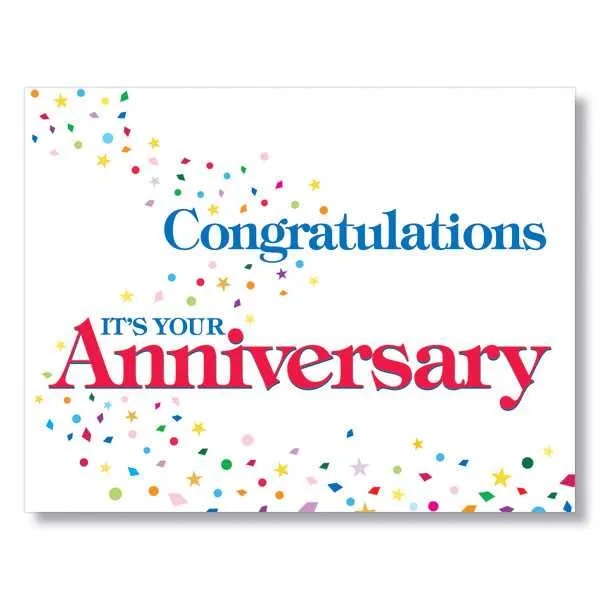How to Write the Perfect Employment Anniversary Message for Your Team

Recognizing an employee’s anniversary is a meaningful way to show appreciation and strengthen workplace relationships. A well-crafted message can highlight their contributions and express gratitude for their dedication. Begin by acknowledging their time with the company, specifically noting the number of years or months they’ve been with the team.
Tailor your message to reflect the individual’s impact on the workplace. For example, mention specific achievements, qualities, or projects they’ve worked on that have made a difference. Avoid generalities and focus on details that resonate with the employee’s role and efforts.
Finally, offer sincere congratulations and a look forward to continued success. An employee’s anniversary is a milestone that not only marks their past contributions but also signals a future of growth and collaboration. A personal touch can make a simple message stand out and be remembered.
Employment Anniversary Message
Recognize and celebrate an employee’s anniversary with a personalized message. Acknowledge their dedication, growth, and contributions in a way that feels genuine and heartfelt.
- Be specific about the employee’s achievements. Mention key milestones, such as successful projects or specific goals they’ve met over the years.
- Highlight their impact on the team and the company. Whether it’s through their leadership, teamwork, or problem-solving abilities, make sure the message reflects their value.
- Show appreciation for their hard work and commitment. Acknowledge the challenges they’ve overcome and the growth they’ve achieved.
- Personalize the message to include things that reflect their personality or specific contributions. A simple touch, like referencing a favorite team event or a special moment, can make the message stand out.
Example Message:
“Congratulations on your 3rd anniversary with us, [Name]! Your work on [specific project or achievement] has made a lasting impact. We are grateful for your dedication and are excited to see the continued success you’ll bring to the team. Thank you for everything you do!”
Keep the tone positive and motivating. Use this anniversary to inspire continued growth and strengthen the employee’s connection to the company.
How to Craft a Personal and Meaningful Employment Anniversary Message
Make the message specific by referencing the employee’s unique contributions and achievements. Acknowledge the impact they’ve made on the team or company. Use their name and highlight specific projects or milestones they’ve reached during their time with the company.
Keep the tone warm and appreciative. Avoid generic compliments. Instead of saying “thanks for your hard work,” try “your dedication to the XYZ project has been invaluable, and we’re so grateful for your creativity and drive.” This makes the message feel more personal.
Keep it concise. Avoid lengthy paragraphs that can dilute the impact. Focus on the most important aspects of their contribution and the significance of their role in the team.
Consider including a small touch of humor or an inside reference, something only they would understand. This adds a personal and relatable tone to the message.
End with a forward-looking statement. Express excitement for the future, highlighting how the employee’s continued presence will contribute to upcoming goals or projects. This creates a sense of anticipation and reinforces their value to the team.
Best Practices for Writing Professional Employment Anniversary Messages for Coworkers
Be specific about the achievements or contributions your coworker has made over the past year. Mention projects they’ve led, challenges they’ve overcome, or positive impacts they’ve had on the team. Recognizing these efforts shows that you value their work and attention to detail.
Avoid generic phrases. Tailor your message to the individual’s personality and role within the company. Personalized messages feel more genuine and meaningful, as they demonstrate your understanding of their contributions beyond just a simple “thank you” or “congratulations.”
Keep your tone upbeat and appreciative. Acknowledge their hard work while keeping the message professional and positive. A balance of warmth and professionalism shows respect for both the individual and the workplace environment.
Be mindful of length. Keep it concise, as a long-winded message may dilute its impact. Focus on quality and specificity, rather than writing a lengthy paragraph. This ensures that the message is both engaging and respectful of their time.
End with a forward-looking statement. Express excitement about continuing to work together and the potential for future collaboration. This reinforces the sense of teamwork and encourages a positive outlook on the upcoming year.
When and Where to Send Employment Anniversary Messages in the Workplace
Send employment anniversary messages on or near the exact date of the employee’s anniversary. This shows attention to detail and makes the recognition feel more personal and timely. If possible, adjust the message to reflect the individual’s specific contributions and milestones, ensuring it stands out as genuine and thoughtful.
The best platform for sending these messages depends on the company’s communication culture. For most workplaces, email is a safe, professional choice, allowing the message to be kept for future reference. For more informal environments, a team chat platform like Slack or Microsoft Teams can be effective and casual. Consider company-wide newsletters if celebrating multiple anniversaries at once, but be mindful not to overwhelm employees with excessive recognition. Personal messages can also be shared during team meetings or one-on-one conversations, where the moment can feel more direct and heartfelt.
Always ensure that your message aligns with the company’s tone and values. If you are uncertain about the appropriate method, ask colleagues or HR for guidance. Keep the message simple but sincere–avoid excessive formality or overly elaborate language. A few kind words can go a long way in reinforcing employee engagement.